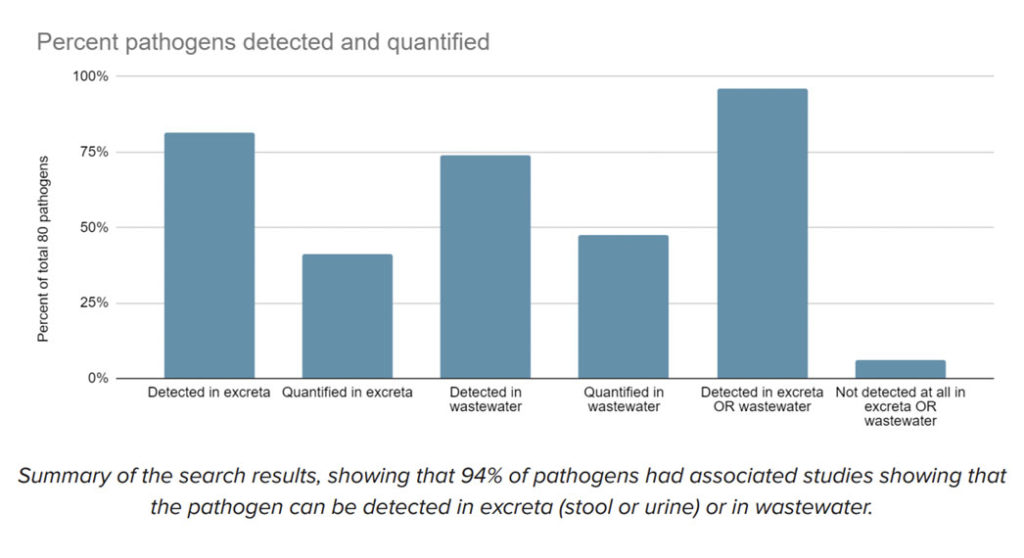
Blog
Pathogen Biomarkers in Wastewater, Stool and Urine: Nearly Endless Opportunities for the Future of WBE

November 3, 2022
Wastewater monitoring for COVID-19 has propelled wastewater-based epidemiology (WBE) from a niche academic field to a globally adopted public health tool. This naturally raises the question: what comes after COVID-19? When it comes to the future of monitoring infectious diseases through WBE, an informal literature review from our team shows there are nearly endless opportunities.
Pathogen detection in wastewater
A pathogen is an infectious agent that causes disease — think SARS-CoV-2, the virus that causes the disease COVID-19, or Salmonella, the bacteria that causes salmonellosis. Infected individuals shed viral or bacterial biomarkers via stool, urine, saliva, or even skin, all of which can make their way into the wastewater system. In other words, as long as the pathogen of interest leaves behind an identifiable biomarker, it can likely be tested via wastewater. Wastewater monitoring and analysis can detect the presence of these pathogens and quantify the amount circulating in a community.
Wastewater monitoring during the COVID-19 pandemic has proven extremely useful. However, this is not the only application for WBE. Recently, wastewater monitoring has been an important tool for tracking other pathogens such as the poliovirus and monkeypox virus. Our review of the scientific literature suggests that nearly all pathogens have the potential for being monitored in wastewater.
Evidence of pathogen biomarkers in wastewater beyond SARS-CoV-2
In this literature review, our team reviewed hundreds of scientific studies on about 80 pathogens relevant to public health. We found that gastrointestinal pathogens – like E. coli, Salmonella, and norovirus – are the best studied in regards to wastewater, urine, and stool analysis. But many other types of pathogens, including respiratory pathogens like SARS-CoV-2 and influenza virus, and sexually transmitted infections have been detected in wastewater as well.
All in all, our team found that 76 out of 80 pathogens, or 94%, have been detected in either wastewater, stool, or urine.

A bright future for infectious disease monitoring via wastewater analysis
So what does this mean? In short — almost any pathogen can likely be monitored effectively via wastewater analysis. A recent systematic review from another group came to a similar conclusion. So while our informal literature review was not all encompassing, it highlights the versatility of harnessing wastewater monitoring to produce valuable infectious disease data to inform public health.
It’s important to mention that barriers to expanding the field of WBE do exist, but given adequate investment in research and development, science isn’t the blocker to expanding WBE. We hope that the main barriers, such as coordination, funding, and logistical concerns, will continue to improve as the field matures.
Either way, we believe in a future where many infectious diseases are monitored via wastewater analysis to proactively inform public health interventions and help prevent future pandemics.
Written by Biobot Analytics
Biobot provides wastewater epidemiology data & analysis to help governments & businesses focus on public health efforts and improve lives.





